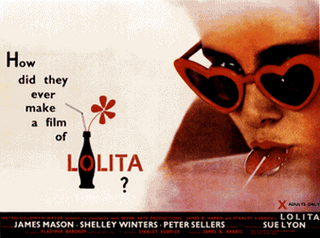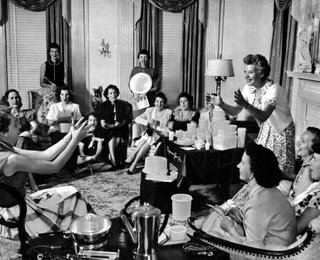by Tyler B.
There were many important advances in medicine during the 1950’s including the first human aorta transplant, the discovery of Hepatitis A, as well as the synthesis of the world’s first wonder drug, Penicillin. (1) All of these discoveries happened in 1950 alone. Truly, 1950 was a turning point in modern medicine. The following is an overview of some of the most important advances in medicine during the 1950’s.
The synthesis of the Penicillin sparked the golden era of antibiotics. In fact, most of the antibiotics that we have available today were discovered in the 1950s and use the same method of action against infections; “namely by interfering with the formation of a bacterium's walls, proteins or DNA, so that it cannot reproduce and spread.” (2) However, researchers were quickly finding that penicillin and other early antibiotics could not kill every illness causing bacteria. Thus, the term “superbug” was coined. A superbug, is an organism which readily adapts to the treatment of antibiotics and passes down its resistant traits to its offspring. Staphylococcus Aureus, or staff bacteria as it is commonly called, was the first of these superbugs, taking only 4 years to develop resistance to penicillin. (3) Science pushed very hard during the 50’s for the research and development of new antibiotics to win the race against resistant strains of bacteria.
In 1951, the first pharmaceutical to combat alcoholism was marketed under the brand name, Antabus. Antabus worked by inhibiting the enzyme needed to process alcohol, making 1 drink feel more like 5 or 6. (4) This quickly proved dangerous and was later removed from the market. In other news in 1951, a report was underway which ultimately proved that some cancers are caused by viruses, a vaccine for yellow fever was discovered, and neurologists were the highest paid physicians in the country with an average income of over $28,000. (5) The average American income at that time was a mere $3,400! (6)
In 1952, much research was being done to combat cardiovascular failures. For example, the first heart-lung machine is used on a 15 month old girl with a failing heart (7), electric shock was successfully used to revive a patient who had suffered a cardiac arrest, an artificial heart valve is inserted in a human heart, holes in the heart are surgically fixed, and the world’s first pacemaker is invented! (8) Other noteworthy medical achievements include the awarding of the Nobel Prize to Rutgers’s University for discovering Streptomycin, a powerful antibiotic that combated Tuberculosis. (9) With Tuberculosis well on its way to becoming extinct, another epidemic is at its height. By 1952, the Polio epidemic had reached an all-time high of over 58,000 reported cases. (10) The race for the Polio vaccine was now hot and heavy and a cure seemed only moments away.
1953 marks the first successful Polio vaccination for both monkeys and humans by Dr. Dr. Jonas Salk. (11) By 1954, the trials began to test the vaccine for efficacy. It was also in 1954 that the first open heart surgery had occurred, a huge step in cardiology. Yet, with all of the advancements in cardiology, President Eisenhower suffers a heart attack in September of 1955.
Sadly, in 1955, a mere 5 percent of medical school students are women and less than 3 percent are African American, even though the American Medical Association opened its doors to African Americans back in 1950. (12) Also noteworthy in 1955 and early 56, the first kidney transplant occurred and shortly thereafter, the first kidney dialysis machine is used to effectively filter blood. (13) Also in 1955, A birth control pill called Enovid, is tested on more than 15,000 Puerto-Rican and Haitian women under the supervision of Harvard University physician Gregory Pincus. (14) Although there were serious side effects, they were downplayed and it went on to become the first widely distributed birth control pill. Smoking was also becoming a known health risk in 1956. It took them a while, but finally in 1956, the American Cancer Society links the smoking of cigarettes to lung cancer. Despite this warning, it was estimated that 48% of Americans above the age of 14, smoked cigarettes in 1958. (16)
The early to mid 1950’s was a booming time for medical advancements. There were not too many medical discoveries in 1957, 1958 and 1959, but I will briefly list the most important ones. In 1958 ultrasound was employed for prenatal care, greatly decreasing the rates of prenatal complications. (17) Americans during this time were also very concerned with the growing problem of pollution caused by the sheer amount of auto traffic in urban areas such as Los Angeles and New York. (18) The very first national conference on air pollution occurred in 1958. In 1959, a cure-all vaccine for diphtheria, polio, and whooping cough was released. (19)
These are, in a nutshell, the medical advances from 1950-1959. Clearly, some of the most important discoveries in medicine were accomplished during this era. It is important to note that this was the golden era for synthetic pharmaceuticals. Before the 1950’s it was still common to see herbal medicines marketed by large pharmaceutical companies. However, patents could not be placed on naturally occurring products, meaning that companies could note exclusively own the rights to market and sell their products. This all changed with the introduction of synthetic medicines, since they could be discovered, synthesized, patented, and hugely profited from. I feel as though this topic could be as long as a PhD dissertation and still not be adequately covered, but hey, I tried my best. I hope you all enjoyed the information contained in this blog, I certainly did not realize the importance of the medical advancements during the 1950’s until I researched and wrote this.
1.
"1950's Medicine and Health: Important Events in Medicine and Health, 1950–1959." American Decades. Ed. Matthew J. Bruccoli and Richard Layman. Thomson Gale, 1994. eNotes.com. 2006. 29 Oct, 2006
2.
“Merck produces first-in-class antibiotic to fight MRSA” Wai Lang Chu. 05/19/2006 Drugreasercher.com 29 Oct, 2006
3.
‘How Penicillin Kills Bacteria” Cells Alive.com 29 Oct, 2006
4. Ibid.
5. Ibid.
6. Ibid.
7.
“Fifty Years of Open-Heart Surgery” Lawrence H. Cohn, MD. American Heart Association, Inc. 2003 American Heart Association Webpage. 29 October 2006.
8. Ibid.
9.
“The Nobel Prize in Physiology or Medicine 1952” Presentation Speech. Nobelprize.org 29 October 2006
10.
“Celebrating The 50th Anniversary of the Salk Polio Vaccine.” Remembering Polio. University of Pittsburg. 29 October 2006.
11. Ibid.
12. Ibid.
13. Ibid.
14.
“THE STORY OF THE PILL” Kenneth S. Davis American Heritage Magazine Online August/September 1978 Volume 29, Issue 5. 29 October 2006.
15. Ibid.
16. Ibid.
17. Ibid.
18. Ibid.
19. Ibid.














